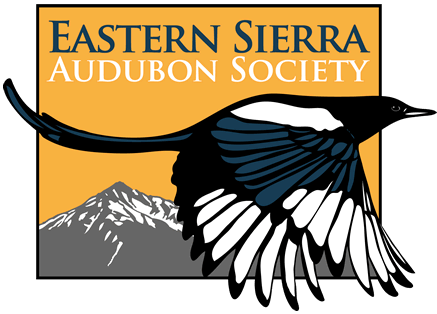The Bells Vireo, the smallest vireo found in Inyo County, usually returns in late March with an outlier arriving 17 Mar. Each year we wonder if any will return to spend spring and summer with us before retreating to a warmer and more hospitable climate in Mexico in fall and winter. There are so few pairs breeding in the county that some natural or man caused event could extirpate them. It was not always that way.
The first record of Bells Vireo in Inyo County appears in the pages of the Death Valley Expedition of 1891. This survey covered not just Death Valley but all of Inyo County and adjacent areas, e.g. Mono County, western Nevada, and limited areas on the western slope of the Sierra. This reports calls Bells Vireo a tolerably common summer resident in the Owens Valley. They found adults with young in Lone Pine in June 1891, saw them at Olancha 16-23 May 1891 and at Bishop Creek 4-10 August 1891and considered them not uncommon near Furnace Creek Ranch 21 June 1891.
When Joseph Grinnell, the dean of California ornithology, visited Furnace Creek Ranch in 1917, 1920, and 1923, there were still a few Bells Vireos there. Observers have noted one or two at a few locations in Death Valley National Park during the 1970s, 1980s and 1990s.
Tragically, two breeding pairs were eliminated at Scottys Castle in the mid 1990s when the NPS, without adhering to the laws, destroyed their breeding habitat by removing the dense willow and scrub understory in order to upgrade the water system. We, and others, have checked annually at Scottys Castle and other historical breeding sites and it seems the species has been extirpated as a breeder from the Park. If an endangered species is not protected in a National Park can it be safe anywhere?
No one knows just how many pairs currently breed in the county, but a good guess would be less than a dozen and it could be half. All recent records are from the Amargosa River drainage in the extreme southeast of the County. So what happened?
For breeding success, the species requires dense, low shrubbery near water with healthy willows or mesquite nearby. The mean nest height is 1 meter (3 feet) making it vulnerable to disturbance. There appear to be two major factors operating against the recovery of the Bells Vireo in Inyo. First is that cattle are allowed to graze in riparian habitats which eliminates the dense low shrubbery and limits young willow growth. Second is the Brown-headed Cowbird, a nest parasite, which lays its eggs in small passerine nests and lets the host family raise its young.
It is possible to overcome both factors with a two-pronged approach. Cattle must be prevented from destroying riparian habitat and cowbirds must be removed from the area. In the Lower Owens River Project, sections of the river are planned to be fenced to prevent cattle from entering. This excellent step should restore the habitat that used to house Bells Vireos a century ago. Cowbird trapping and habitat enhancement have been incredibly successful in Michigan where the Kirklands Warbler was on the verge of extinction and has made a remarkable recovery. The San Diego and Orange County Supervisors gave permission for cowbird trapping in an effort to save the few Bells Vireos they had left. Again, the vireo has made a dramatic recovery. The Kern Preserve also turned to cowbird trapping in an effort to save their Willow Flycatcher population. And again, they were successful. These success stories are only a part of the picture as there must be habitat in which the birds can breed.
The Bells Vireo is an indicator of the damage man has done to the States habitats, first because of ignorance, then as a matter of public policy. More than 50% of the population has disappeared in the last century. How much more has to be lost before the public says, Enough is enough!
Tags: flycatcher, vireo, warbler
